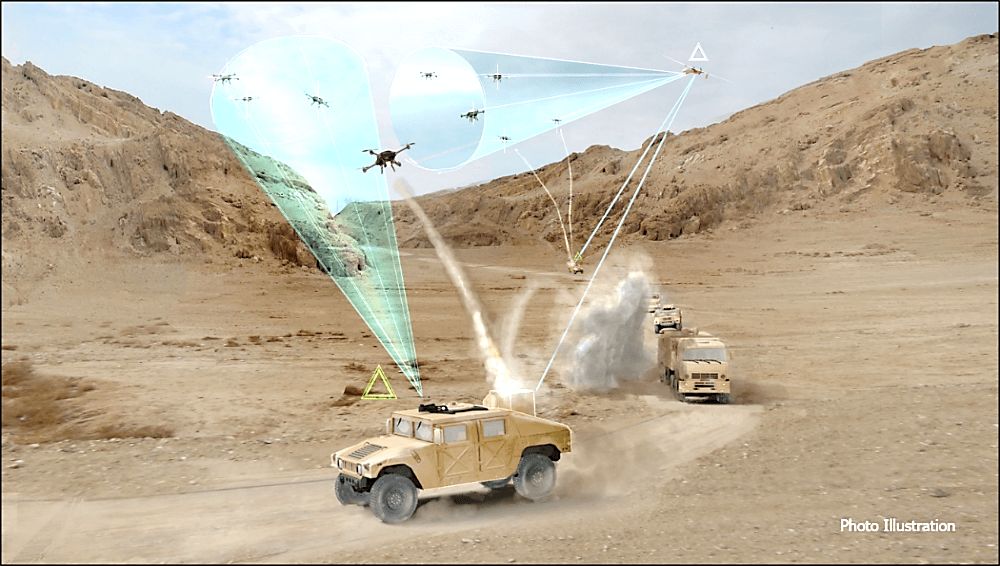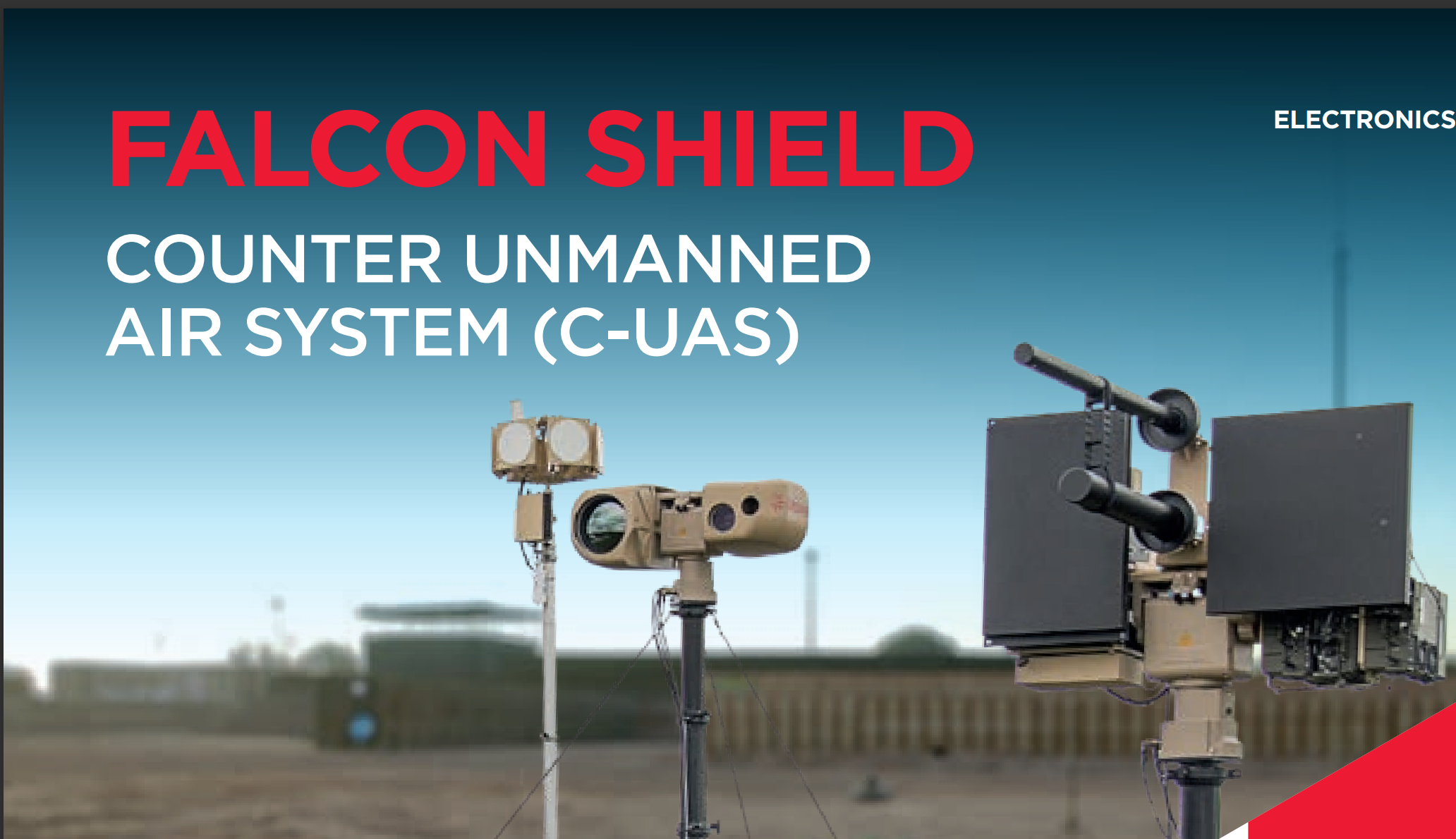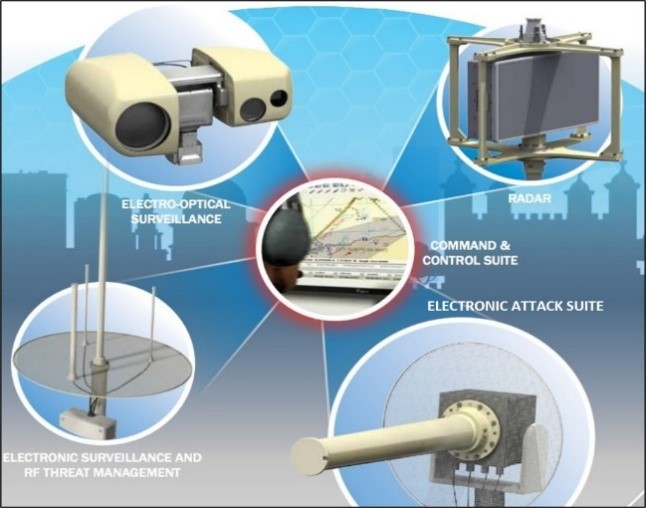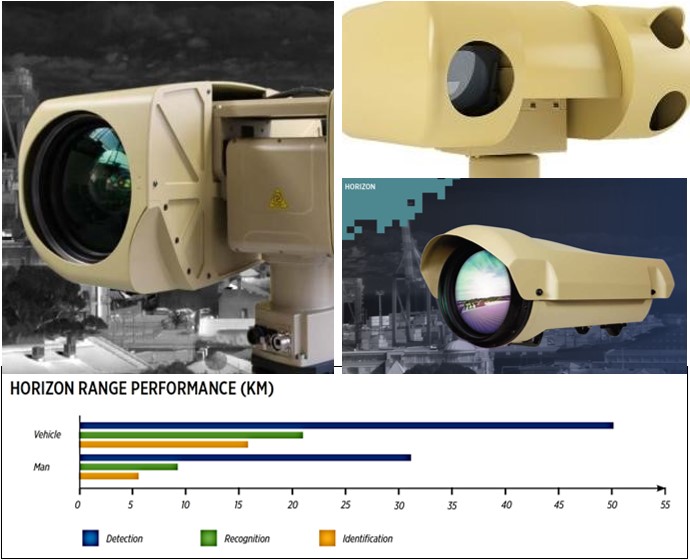
Counter Drone Systems: Dealing with Lethal Unobtrusive Threats
Mon, 05 Jul 2021 | Reading Time: 7 minutes

Image Source- defensesystems.com
The drone attack on Jammu Air Force station on 27 June should not have caught the Indian security establishment unawares, but it actually did. The looming danger of employing this low cost option by adversaries as well as non – State actors became a reality with this attack, though there are always pointers towards such imminent threats. The 14 September 2019 drone swarm attack on the Saudi Aramco Oil Refinery in Eastern Saudi Arabia by Yemeni Houthi rebels made the world sit up and take notice of this real and present danger. These are not isolated instances and there are numerous examples of drones being used against civil as well as military targets in the past two years, with some of them enumerated below:-
- 19- 21 December 2018, 08 January 2019. Two international flights nearly hit by drones at London’s Gatwick and Heathrow Airports, causing massive disruptions and large scale cancellation of flights.
- September to November 2020. Drones and loitering munitions extensively used by Azerbaijani Forces against Armenian Forces in the Nagorno- Karabakh conflict.
- 10 February 2021. Passenger plane is engulfed in flames at Saudi International Airport after ‘drone attack’ by Yemen’s Houthi rebels.
- 23 June 2021. Drone attack on nuclear plant at Karaj, Iran, involving one or more small rotor-powered drones, which were flown into the building from a short distance away.
- 28 June 2021. Two drones spotted over Indian Army (IA) Base in Kaluchak, Jammu. Drones engaged by IA and repelled.
It is evident that the use of armed drones to cause casualties to personnel and materials is on the rise- not only against State/ military targets, but also for use in theft and with other anti-social aims. For such an unobtrusive yet ubiquitous threat, the real challenge lies in finding holistic fail- proof solutions that detect, identify and warn the deployed counter drone measures to neutralise multiple targets in all weather, terrain and visibility conditions. Such complete start- to- finish systems are the need of the day in the counter- drone effort.
What are India’s Efforts at Building Counter- Drone Capability?
India’s Defence Research and Development Organisation (DRDO) had fielded a short range counter drone system, the D-4 Drone System on the occasion of Republic Day 2021 for VVIP security. The same has been briefly explained in an article in Weapon Platforms @Chanakya Forum(https://chanakyaforum.com/directed-energy-weapons1). As per DRDO, this system reportedly comprises a radar system that offers 360º coverage for detection of micro drones when they are 4 km away. Electro-optical/infrared (EO/IR) sensors can detect drones up to 2 km away. A radio frequency (RF) detector can detect RF communications up to 3 km away. While such sub systems are desirable in any counter drone solution, there is a requirement for a dedicated Command & Control (C2) System to carry out tasks of sensor fusion, collation, decision support as well as order engagement over a geographical area against multiple aggressors, which has yet to be demonstrated. In a high-level meeting chaired by Prime Minister Narendra Modi on 29 June 21 in the wake of the drone attacks in Jammu on 27 June, such strategies to counter ‘weaponised drones’ were discussed.
While DRDO and some indigenous private companies are working on developing these concepts, such systems have yet to be fielded in totality. Even at the global level, while a number of firms manufacture individual subsystems, leaders in manufacture of holistic counter- drone systems (CDS) number but a handful. Leonardo, an Italian company with footprints in US and UK among other countries, who are frontrunners in Aerospace, Defence and Security, offer Falcon Shield, a holistic and relevant solution to the counter- drone effort.
Falcon Shield

Falcon Shield System Array: (L to R)- Radar, EO System, EA Effectors: Source- www.leonardocompany.com
Falcon Shield is a rapidly deployable CDS which provides a holistic DTID (Detect, Track, Identify and Defeat) solution to users with detection and mitigation capability through a multi-layered response including electronic attack (EA). This response includes capability to take control of a drone and land it safely (a command-link control intervention capability) prior to the need to defeat it by jamming or kinetic solutions. Consequently, the potential for undesired collateral effects is greatly minimised. The Falcon Shield is modular, scalable and centred around its open architecture C2 nucleus, offering the flexibility to augment the basic architecture with a large number of customer specified peripheral sub systems or components. This enables the Falcon Shield CDS to be tailored and optimised to meet the demands of varied locations, threats and user concepts of operation. The capabilities of Falcon Shield are only representative of any robust holistic counter drone system that would meet today’s drone threat mitigation needs.

System Architecture- Falcon Shield: Source- preview.ibb.co
The system was developed in 2015 and has been operationally proven with deployment in the Italian Armed forces and by the Royal Air Force in UK for London airports post the drone intrusion incidents mentioned in the beginning of this article. The system provides flexibility of response in providing kinetic/ soft kill, commandeering or alert response options. Such flexibility of options allows the system to operate without hindrance in an operational as well as a peacetime environment, where property infringement issues could mean that a ‘drone- kill ‘ option may not be the best solution, especially in absence of reliable intelligence regarding intent. The CDS is configurable as a fixed, relocatable or deployable system, thus adding flexibility and enhancing deployment options.
C2. The C2 core of the Falcon Shield CDS is capable of receiving, processing, collating and presenting fused inputs from various sensors to build a cogent picture of the threat. This is verified against an existing database for quick decision making with regards to severity of threat and method of mitigation. Such decision making can also be automated with the help of algorithms, thus vastly reducing response time. The C2 software can geo- locate the drone(s) using Direction Finding (DF) and auto cue the sensors onto the drone(s) in real- time. The electronic surveillance measures (ESM) can identify the EM bandwidth/ spoof the GPS signal of the drone, thus generating the option of commandeering or soft kill by precision electronic attack (EA). While detecting the presence of an enemy drone is important, the C2 core is also able to confirm a drone- free environment, in order to enable normal activities to resume. The C2 core thus provides a modular integrated framework and intuitive user interface which enables comprehensive monitoring/ collation of the prevailing drone threat environment.

Screen Grab of Falcon Shield C2 Display Showing Radar Scan and Camera Mode: Source- www.leonardocompany.com
Sensors. NERIO-LR/ULR is a long range/ ultra-long range, gyro-stabilised modular Electro-Optical (EO) Surveillance, Acquisition and Reconnaissance System with 360º coverage. The sensor system includes high-performance, passive EO and electronic surveillance sensors, combined with a scenario specific radar. These provide fully integrated threat detection, identification and tracking capability. Additional special to role modules, e.g., illuminators, dazzle sources and GPS receiver can also be fitted to meet specific operational needs.

NERIO- LR/ ULR EO System, Horizon TI Camera: Source- www.leonardocompany.com
- The system comes equipped with high resolution HD Thermal Imager (TI) and colour optical camera with a pan and tilt function upto +/- 60º for enhanced coverage, which is capable of auto- slewing onto the target in real- time at upto 120º per second. The EO System can be operated from ground or can be mast/tower mounted along with a fixed location/ man/ vehicle portable C2 station to enhance flexibility. The variety of EO payloads provide coverage for both close-in and long- range surveillance and threat identification.
- An eye-safe Laser Range Finder (LRF) aids in accurate geolocation of drone controller location when identified via EO sensors, thus enabling neutralisation of the target system at source.
- The system comes fitted with a RF Management System (RMS) for electronic surveillance. The Electronic Surveillance Measures (ESM) and radar provide info of the Electromagnetic (EM) band in which the target drone (s) is/ are operating.
- The inputs from these sensors allow the user to evaluate the threat and decide on mitigation options through the various effectors integrated into the system.
Effectors. Due to Falcon Shield’s inherent flexibility, the means for terminal action can include hard/ soft kill means. Based on the knowledge of physical location of the target drone and the EM band in which it is operating as obtained by the sensors, the drone is subjected either to system provided precision EA or hard kill, depending on user’s choice of effectors.
Conclusion
The juggernaut of drone based attacks by hostile Nations and non – State actors is destined to increase in terms of techniques and volume, even in the short term future. There is therefore an imperative requirement to develop, field and share holistic counter drone technologies that will allow user countries to be able to detect, thwart or mitigate such inimical threats and in doing so, work towards achieving the ultimate aim of immunity to such unobtrusive means of hostility and aggression. India thus needs to develop/ acquire such holistic capability on a war footing to beat this emergent threat, either through indigenous development/ production or by means of a Strategic Partnership with identified foreign firms offering holistic systems as above, thus giving furtherance to own ‘Make In India’ theme.
*******************************************************************************************************************
Author

Brig Arvind Dhananjayan (Retd) has commanded an operational Brigade and has been Brigadier- in- charge Administration in a premier training facility. He has had exposure abroad on deputation to Botswana, Southern Africa as member of an Indian Army Training Team and has had extensive exposure in mentoring of Defence Forces overseas. He possesses vast instructional experience, imparting instructions in both technical aspects and tactical application of weapon systems.
Disclaimer
The opinions expressed in this article are the author’s own and do not reflect the views of Chanakya Forum. All information provided in this article including timeliness, completeness, accuracy, suitability or validity of information referenced therein, is the sole responsibility of the author. www.chanakyaforum.com does not assume any responsibility for the same.
Chanakya Forum is now on . Click here to join our channel (@ChanakyaForum) and stay updated with the latest headlines and articles.
Important
We work round the clock to bring you the finest articles and updates from around the world. There is a team that works tirelessly to ensure that you have a seamless reading experience. But all this costs money. Please support us so that we keep doing what we do best. Happy Reading
Support Us




















POST COMMENTS (4)
autel drones
Abhay Kumar Maurya
Akshay S Rao
Vivek Tigga